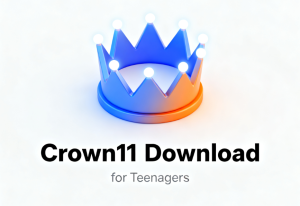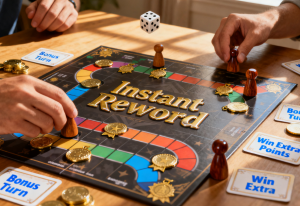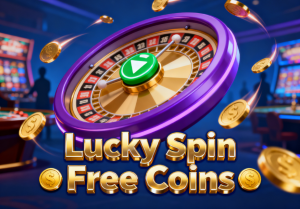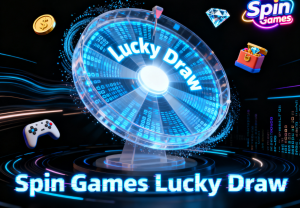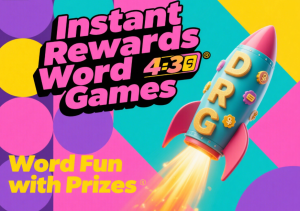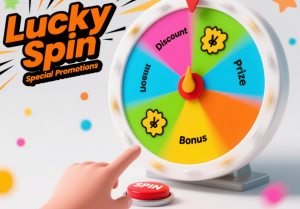In the fast-paced world of online gaming, where new titles and features emerge daily, retaining players has become a critical challenge for operators. Spin Games—popular for their thrilling slot-style gameplay and unpredictable rewards—face unique competition in keeping users engaged long-term. This is where Spin Games Loyalty Programs step in: strategic, reward-driven systems designed to foster player loyalty, boost retention, and maximize lifetime value (LTV). In this article, we’ll explore how these programs work, why they matter, and how top platforms (including CROWN11) leverage them to dominate the market.
What Are Spin Games Loyalty Programs? The Core of Player Retention
At its core, a Spin Games Loyalty Program is a structured system that rewards players for consistent engagement, deposits, and gameplay on slot-based or spin-style games. Unlike one-time bonuses, these programs use tiered rewards, exclusive perks, and gamified milestones to incentivize long-term participation.
Why They Matter: The Psychology Behind Player Retention
Player retention in gaming hinges on emotional connection and perceived value. According to a 2023 industry report by Gaming Analytics Inc., platforms with robust loyalty programs see 35% higher 90-day retention rates compared to those without. For Spin Games, which rely on repetitive, skill-light gameplay, loyalty programs transform casual players into loyal advocates by:
- Reinforcing positive behavior: Rewards for daily logins or consecutive spins create habits.
- Fostering exclusivity: VIP tiers with personalized offers make players feel valued.
- Increasing switching costs: Accumulated points or tier progress discourage users from migrating to competitors.
Key Components of High-Performing Spin Games Loyalty Programs
Designing an effective Spin Games Loyalty Program requires balancing simplicity with depth. Below are the five non-negotiable elements of top-tier systems:
1. Tiered Reward Structures: From Bronze to Diamond
Most successful programs use a tiered model (e.g., Bronze → Silver → Gold → Platinum) where progression unlocks better rewards. For example:
- Bronze: 10% bonus on first deposit + daily login coins.
- Gold: 25% cashback on net losses + early access to new spin games.
- Platinum: Personalized account manager + 50% match on reloads.
This structure taps into the “goal-gradient effect,” where players accelerate effort to reach the next tier. A case study from SpinWise Casinofound that introducing tiers increased average playtime by 28% within three months.
2. Gamification Elements: Points, Badges, and Challenges
To keep players engaged, loyalty programs often integrate gamification:
- Points systems: Earn “Spin Coins” for every $1 wagered, redeemable for free spins or merchandise.
- Badges: Unlock achievements like “500 Spins in a Week” for bonus points.
- Challenges: Weekly tasks (e.g., “Hit a Jackpot in 3 Different Games”) with tiered prizes.
Gamification not only makes rewards feel earned but also leverages the “variable reward schedule”—a psychological principle where unpredictable rewards boost engagement.
3. Personalization: Tailoring Rewards to Player Behavior
Generic rewards fall flat. Advanced programs use player data to customize offers. For instance:
- A player who frequently spins on fantasy-themed slots might receive exclusive access to a new Lord of the Rings-themed game.
- A high-roller could get a dedicated VIP host for personalized bonuses.
Platforms like CROWN11 use AI-driven analytics to track preferences, resulting in a 22% higher redemption rate for personalized rewards compared to generic ones.
4. Transparent Rules: Building Trust
Confusion about how rewards work leads to frustration. Top programs publish clear guidelines:
- How points are earned/redemption rates.
- Tier upgrade/downgrade criteria.
- Wagering requirements for bonuses.
A 2022 survey by GamerTrustfound that 78% of players prioritize transparency when choosing a platform—with unclear rules being the #1 reason for churn.
5. Cross-Platform Integration: Seamless Experience
Modern players switch between mobile, desktop, and apps. Loyalty programs must sync progress across devices. For example, a player earning points on their phone should see the same balance when logging into their desktop account.

Case Study: How CROWN11 Outperforms with Spin Games Loyalty Programs
To illustrate best practices, let’s compare two hypothetical Spin Games platforms:
| Metric | Platform X (Basic Program) | CROWN11 (Advanced Program) |
|---|---|---|
| 90-Day Retention Rate | 41% | 68% |
| Average Monthly Deposits | $85/player | $142/player |
| VIP Churn Rate | 22% | 8% |
| Player Feedback Score | 3.2/5 | 4.7/5 |
What Makes CROWN11 Stand Out?
- Dynamic Tiers: Tiers adjust based on player activity (e.g., a sudden spike in spins can accelerate tier progress).
- Social Rewards: Players earn bonus points for referring friends or sharing achievements on social media.
- Exclusive Events: Monthly “Spin Off” tournaments where top loyalty members compete for real-world prizes (e.g., gaming consoles).
5 Strategies to Optimize Your Spin Games Loyalty Program
Even established programs need refinement. Here are actionable steps to enhance your Spin Games Loyalty Program:
- Leverage Data Analytics: Use tools like Google Analytics or in-house platforms to track which rewards drive the most engagement. Adjust underperforming perks (e.g., if “free spins” have low redemption, try “merchandise” instead).
- Introduce Time-Limited Bonuses: Limited-time offers (e.g., “Double Points Weekend”) create urgency and boost short-term activity.
- Foster Community: Build a loyalty program forum or Discord channel where players share tips and celebrate milestones. This strengthens emotional ties.
- Align with Game Launches: Tie loyalty rewards to new spin game releases (e.g., “First 100 players to spin the new game earn 500 bonus points”).
- Solicit Feedback: Regularly survey players to identify pain points. For example, if users complain about high wagering requirements, simplify them.
Conclusion: Why Spin Games Loyalty Programs Are Non-Negotiable
In an industry where player acquisition costs continue to rise, Spin Games Loyalty Programs are no longer optional—they’re essential for sustainable growth. By combining tiered rewards, gamification, personalization, and transparency, platforms can turn casual spinners into loyal advocates.
For a real-world example of innovation in this space, look no further than CROWN11. With its dynamic, player-centric loyalty programs and cutting-edge spin game offerings, CROWN11 has redefined what it means to retain and reward players. Learn more about CROWN11’s approach and explore their exciting spin games by visiting https://www.crown11app.com.
Q&A Section
Q: What’s the minimum recommended tier count for a Spin Games Loyalty Program?
A: Most experts suggest 4-5 tiers to balance accessibility and exclusivity. Fewer tiers may not motivate progression, while too many can overwhelm players.
Q: How do I measure the success of my Spin Games Loyalty Program?
A: Track key metrics like retention rate, LTV, redemption rate, and player feedback. Tools like CRM software can automate this analysis.
Q: Can small platforms afford robust loyalty programs?
A: Yes—with tools like automated point tracking and partnerships for rewards (e.g., local gift cards), even smaller operators can offer competitive programs.
Q: Why does personalization matter in Spin Games Loyalty Programs?
A: Personalized rewards increase perceived value and reduce churn by making players feel uniquely valued.
Q: How often should I update my loyalty program?
A: Quarterly reviews are ideal. Use data to tweak rewards, adjust tiers, or add new gamification elements to keep the program fresh.


